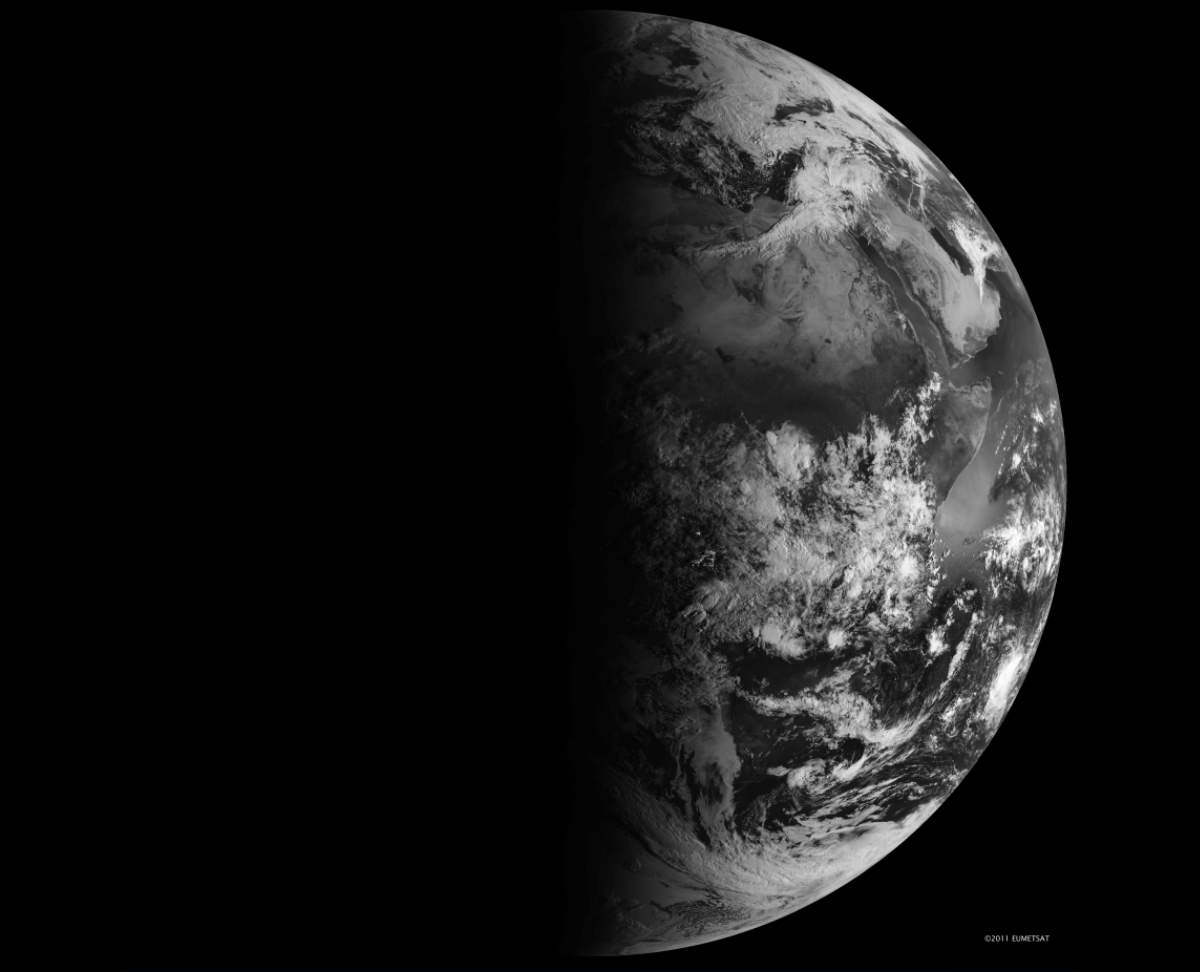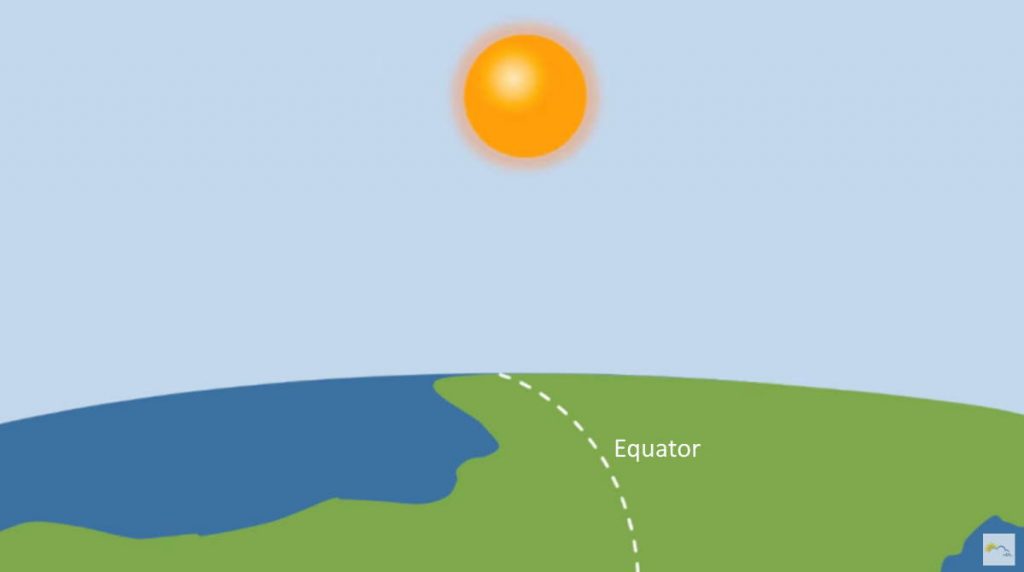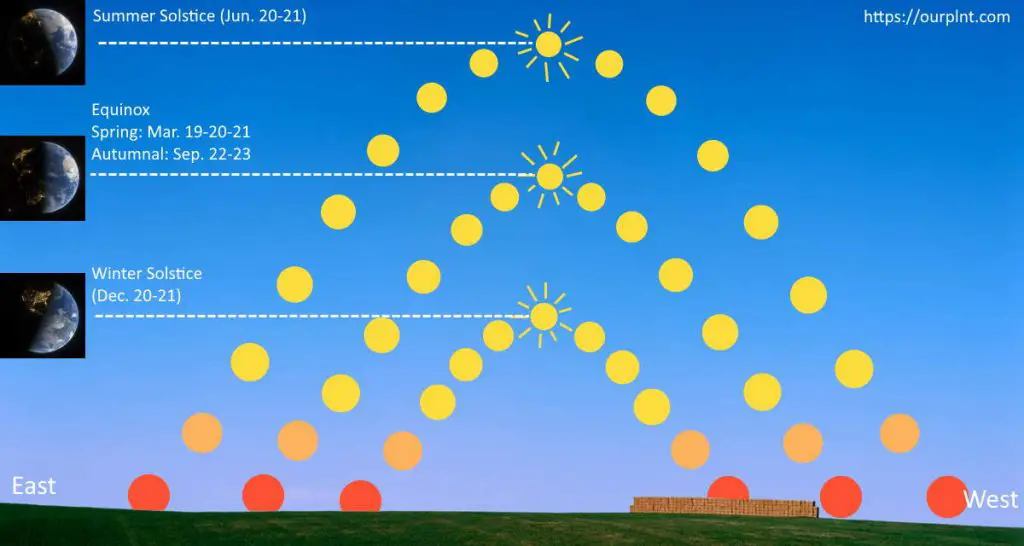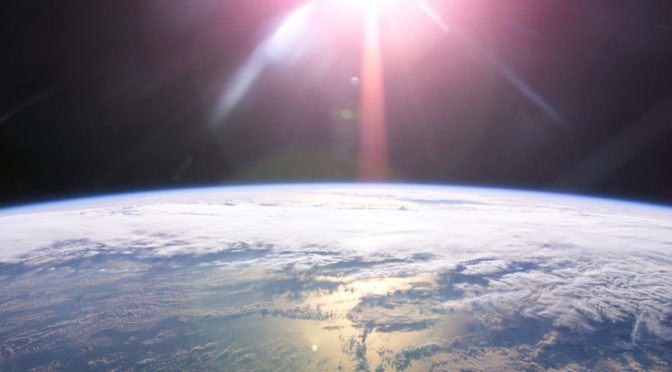In fact, contrary to the popular belief, the lengths of day and night aren’t equal on an equinox. There’s another term for this: equilux.
What is equilux?

The equilux is when day and night are of equal length. Its exact date depends on your location around the earth, but it’s always before the spring equinox and after the autumn equinox.
Why the lengths of day and night aren’t equal on an equinox?
There are a few reasons for this. First of all, what is an equinox?
Equinox definition
An equinox is the instant of time when the plane of Earth’s equator passes through the geometric center of the Sun’s disk. In other words, the equinox is only a moment that marks when the Sun crosses the Earth’s equator.
An equinox occurs twice each year, around 20 March and 23 September. In the northern hemisphere, the spring equinox occurs every year, on either 19, 20, or 21 March. It marks the beginning of the astronomical spring.
The word comes from Latin equi or “equal” and nox meaning “night”. But, as we see soon, the lengths of day and night are only approximately equal on the day of an equinox.

Related: Equinoxes and Solstices from Space
Earth’s axis’ tilt
The duration of day and night are almost never equal on Earth because our planet’s axis is tilted. That’s why equinoxes (and solstices, see notes 1) occur. That’s also why we have seasons.
So, the Sun’s center is usually not on the equator for most of the year. When the center of the Sun’s disc crosses the equator, astronomers define this moment as the equinox.

When an equinox occurs, the duration of the day and night isn’t quite the same, and there are two reasons for this.
- The sun isn’t just a point in the sky – it’s a disc. Technically, sunrise starts when the upper edge of the Sun meets the eastern horizon, and sunset ends when the upper edge of the Sun sinks below the western horizon. As a result, the daytime is slightly longer than the nighttime on the day of an equinox.
- Our planet’s atmosphere refracts (bends) sunlight. When light passes from one medium to another, its path changes. Sunlight travels through the vacuum of space, and when it travels through Earth’s comparatively denser atmosphere, it bends. Because of this bending, we can see the upper edge of the Sun several minutes before it touches the eastern horizon, and contrarily, we can see the upper edge of the Sun several minutes after the Sun has sunk under the western horizon. This adds even more time to daylight during the equinox. To make things even more complicated, this bending changes with the temperature and pressure of the atmosphere, so the lengths of the night and day on the equinox are only ever approximately the same at any point on Earth.
For a great visual explanation, see the video titled “Spring Equinox vs Equilux” below this post.

Equilux vs Equinox
So, when the duration of day and night are equal? We have another term for this, which is believed to have been coined in the 1980s, and achieved more widespread recognition in the 21st century – and it is equilux.
As we see above, the duration of the daytime is longer than the nighttime on equinox.
Instead, the equilux is when day and night are of equal length – and the exact date of equilux depends on your location around the world. In the United Kingdom, for example, the equilux occurs 2-3 days before the spring equinox and 2-3 days after the autumn equinox.
In 2021, for example, the spring equilux happened on 17 March in the United Kingdom.
Notes
- A solstice is an event occurring when the Sun appears to reach its most northerly or southerly excursion relative to the celestial equator on the celestial sphere. Two solstices occur annually, around June 20-21 (summer solstice for the northern hemisphere) and around December 20-21 (winter solstice for the northern hemisphere).
Sources
- “Day and night aren’t equal lengths on an equinox – here’s why” on The Conversation
- Equinox vs equilux – what’s the difference? on the BBC News website
- Equinox on Wikipedia
- How Many Elephants are Left in the World in 2025? - August 17, 2025
- Moon Landings: All-Time List [1966-2025] - February 2, 2025
- What Is Max-Q and Why Is It Important During Rocket Launches? - January 16, 2025

2 replies on “What is equilux and why on an equinox day and night aren’t equal lengths”
Hello trying to determine the Equa-lux for 2022 I live in SW Florida / But even Jerusalem would do I estimate the Equa-lux to be on 3/17 2022 would you say that is a correct window of time for an Equa-lux? Thank you
How did man know when a equilux occurred in ancient times?